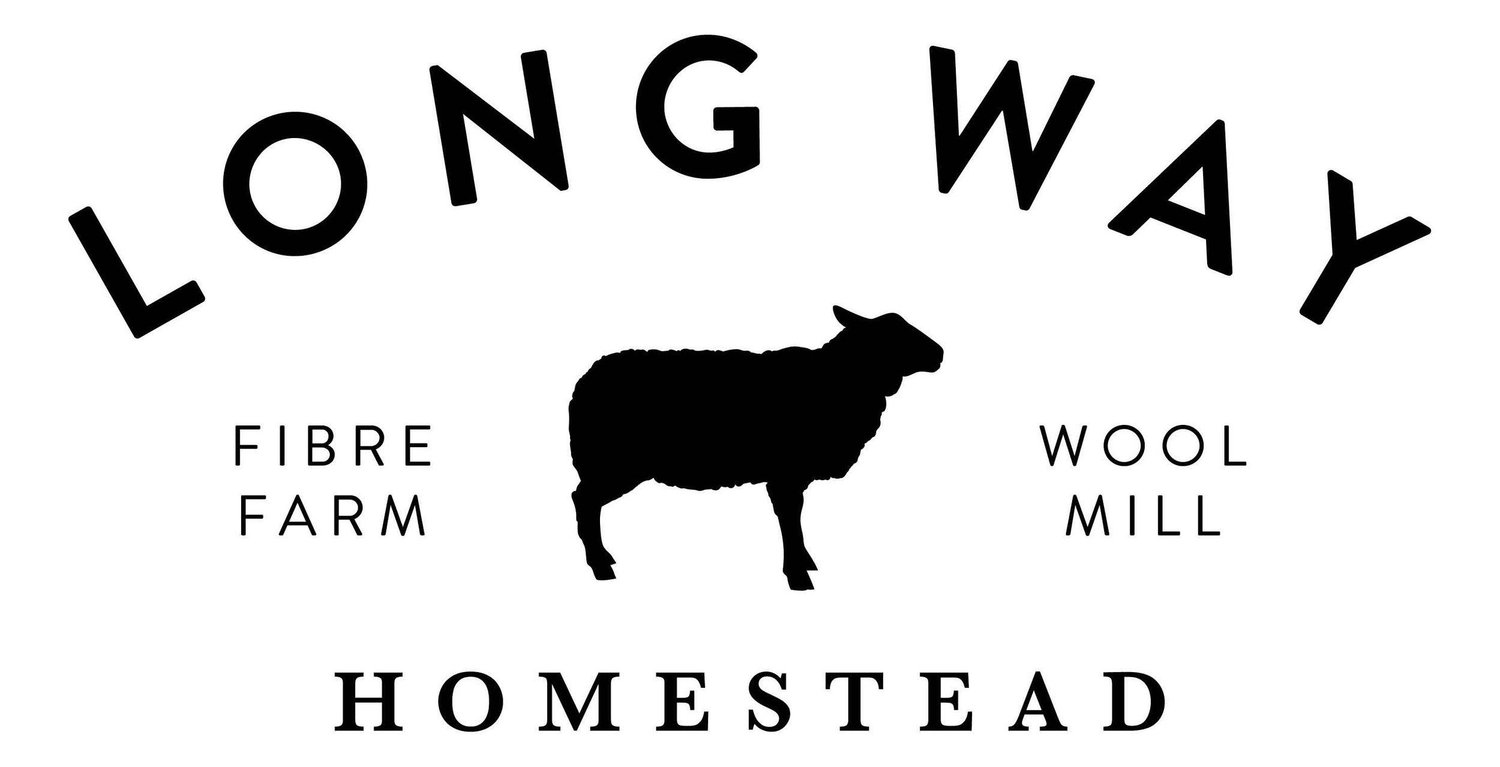Traceability & Transparency
Ok here is a little experiment - grab the skein/ball of yarn that is closest to you and take note of what is on the label. Brand/logo, name of yarn, meterage/yardage, weight, gauge, washing instructions - does it include the information about where the wool (or other fibres) were grown? How about where it was processed or dyed? If it’s an indy-dyed skein it probably says “small batch processed in Canada” or something similar, but does it have any info about where it actually came from?
Chances are a lot of the wool you or I work with does not have that information included on the label. If you are particularly discerning you might check out their website and see if they include traceability info there. Chances are you might find some information - but the larger the yarn company the harder it is to track down that information.
So why does it even matter?
Maybe it doesn’t - and that’s ok too. For lots of us fibre work is how we relax and maybe unplug from the constant barrage of stress in the world (and there has been a lot of that this week right?). But I believe that most of us want to make ethical, choices in our purchasing. We want our yarn to be soft AND from a farm that upholds standards of care for its sheep. We want our fibre to be well prepared AND processed by someone who was paid a living wage. We want our yarn to be fantastic colours AND to trust that the effluent water was treated properly before entering waterways.
I have spent a good portion of the last 4 years trying to document and research this information within our industry. To document the value chain that our wool travels through. And this info is really hard to find.
I don’t believe there is some large nefarious ‘big wool’ scheme happening in the world. I imagine that we don’t see that information front and centre because not enough consumers are asking about it.
But the further removed we are from the value chain of our wool and our textiles the less we understand who is making the decisions and what factors influence their decision making.
Here is what some of the numbers tell us.
In 2022 - 1,357,900kg of wool was purchased from Canadian sheep farmers and 620,162Kg of wool was sold and exported off shore (Agriculture Canada). Once that wool is bought and sold we don’t have any more information about where it goes or how it is transformed, it joins the global wool pool. The best we can hope for is that farmers were paid adequately for the wool when they sold it.
In the same year $4.4 million dollars worth of processed wool yarn was imported to the country by some of the bigger yarn companies out there. That is obviously the wholesale cost of yarn, and when you double, triple or more that figure we can see that millions of dollars of wool is being imported into the country.
Without transparent information from the companies selling us our yarn, the only information we can glean are the weights and dollar amounts from Statistics Canada. We have to assume that the value chain spans thousands of miles, connecting the farm where the wool is grown, the mill where it’s processed, and the dye houses that transform it into yarn. And our only option is to TRUST the companies that are selling it to us.
That trust is a bit hard in a globalized capitalistic system - where profit is the key driver. And the greatest way to maximize profit is to reduce costs - and that can be done by outsourcing labour to lower-cost economies with less oversight.
So if we (as yarn companies) want to build in that trust and encourage ethical sourcing of wool and yarn we have to prioritize transparency and traceability. And as consumers we also have a role to play - we need to start asking yarn companies and local yarn stores where the wool is coming from and how it’s processed. If we collectively demand those answers it will become common practice to include value chain information.
On our farm and in our mill being transparent with our customers about the process involved from sheep to yarn to waste is a priority. This is essentially the impetus for my next book true cost of wool. But you can also check out our full Traceability & Transparency page on our website here.


